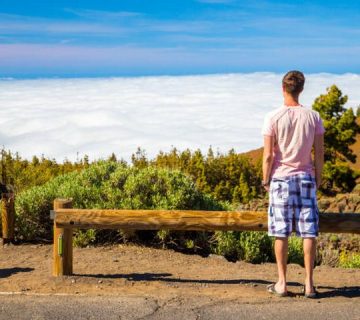How To Maximize Your Kilimanjaro Trekking Experience
Climbing Mount Kilimanjaro is much more than just a trek; it’s a journey of self-discovery and a testament to human endurance and spirit. As the highest peak in Africa, Kilimanjaro beckons adventurers from all over the globe to experience its majestic heights and stunning landscapes. At Kilimanjaro Centre for Trekking and Ecotourism (KCTE), we believe that with the right preparation and mindset, you can transform your climb into an unforgettable adventure. Here’s how to maximize your Kilimanjaro trekking experience, ensuring it’s as enriching as it is exhilarating.
Preparation: The Key to Success
Physical Fitness
Begin your journey long before you set foot on the mountain. Physical fitness is crucial; after all, trekking Kilimanjaro is a demanding endeavor. Embark on a training regimen that includes cardio, strength training, and plenty of hiking. Acclimatize yourself to long walks, preferably on varying terrains, to condition your body for what lies ahead.
Mental Readiness
Kilimanjaro not only challenges the body but also the mind. Mental toughness will guide you when the climb gets tough. Practice meditation or mindfulness to strengthen your mental fortitude, allowing you to maintain a positive and determined mindset throughout your trek.
Choosing the Right Gear
The right gear can make or break your trip. Invest in good quality, durable trekking gear. Key items include a sturdy backpack, a comfortable yet robust pair of hiking boots, thermal clothing, a sleeping bag suitable for low temperatures, and a waterproof jacket.
Embracing the Journey: Each Step a New Discovery
Select the Best Route
Kilimanjaro offers several routes, each with its own unique attractions. From the scenic vistas of the Lemosho route to the challenging gradients of the Umbwe route, choose one that aligns with your experience level and adventure spirit. At KCTE, we offer guided tours on all major routes, providing insights into the ecological and cultural significance of the areas you pass through.
Acclimatization: Slow and Steady
Altitude sickness is a real concern on Kilimanjaro. Opt for a longer route that allows more time for acclimatization. Take it slow, and let your body adjust to the higher elevations. Remember, "pole pole" (slowly, slowly) is the mantra here.
Savor the Scenic Views
Kilimanjaro is not just about reaching the summit; it’s about the sights along the way. From the lush rainforests at the base to the alpine desert and finally the icy summit, each zone offers a unique landscape. Capture these moments both in your camera and your heart.
Understanding the Mountain’s Ecology and Culture
Engage with your guides to learn about the mountain’s ecological zones, local flora and fauna, and the rich history of the Chagga people who live on its slopes. Each story and fact adds a layer of depth to your trek.
Ensuring Safety and Comfort
Stay Hydrated and Nourished
The physical exertion will deplete your energy reserves, so maintain high energy levels with proper nutrition and hydration. Eat balanced meals and drink plenty of water. Discuss with KCTE the arrangements for meals to ensure they meet your dietary needs and preferences.
Trust Your Guides
Our guides at KCTE are trained to prioritize your safety and well-being. They are equipped with the knowledge and skills to handle the varied demands of the journey. Trusting them and following their advice can significantly enhance your safety and enjoyment of the trek.
After the Ascent: Reflection and Recovery
Celebrate Your Achievement
Reaching the summit, Uhuru Peak, is a momentous occasion. Celebrate your success, but also reflect on your journey and what it has taught you about yourself and the world.
Post-Trek Recovery
Allow your body to recover. Post-trek relaxation can be as rewarding as the trek itself. Consider a safari or a visit to Zanzibar to unwind on its beautiful beaches, which can be arranged seamlessly through KCTE.
Engage with KCTE for an Unmatched Kilimanjaro Experience
At Kilimanjaro Centre for Trekking and Ecotourism, we go beyond just guiding you to the summit. We ensure a holistic trekking experience that immerses you in the natural beauty and cultural richness of Kilimanjaro. Our expert team is committed to providing a safe, memorable, and transformative journey.
FAQ
Q: What is the best time of year to climb Kilimanjaro?
A: The best times are during the dry seasons: January to mid-March and June to October.
Q: How long does it take to climb Kilimanjaro?
A: It typically takes about 5 to 9 days, depending on the route and pace.
Q: Do I need special insurance for trekking Kilimanjaro?
A: Yes, you should have travel insurance that covers high altitude trekking.
Q: Can beginners climb Kilimanjaro?
A: Yes, beginners can climb Kilimanjaro; however, ample preparation and choosing a suitable route are advised.
Q: How can I book my Kilimanjaro trek with KCTE?
A: Visit our website or contact us directly to discuss your trekking needs and preferences. We offer tailored experiences suited to your requirements.
Final Thoughts
Climbing Kilimanjaro is more than just a physical challenge; it’s an adventure that feeds the soul. At Kilimanjaro Centre for Trekking and Ecotourism, we ensure that your journey to the rooftop of Africa is filled with awe-inspiring views, profound personal insights, and a deep connection with nature. Ready to take on the challenge? Book your Kilimanjaro climbing adventure with KCTE and transform your dream into reality.




